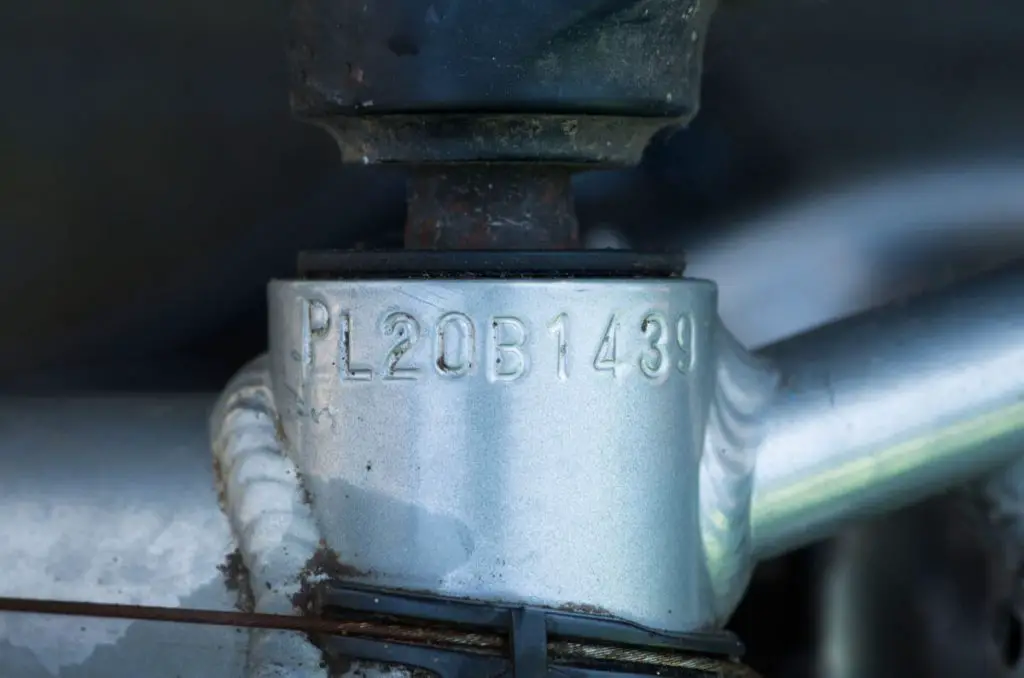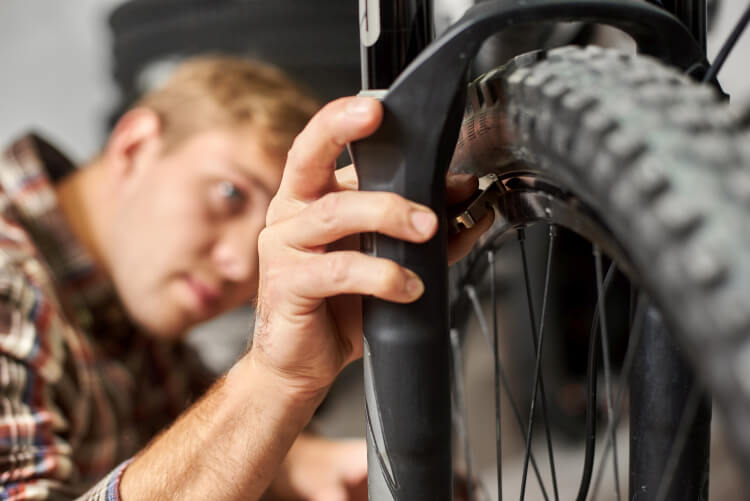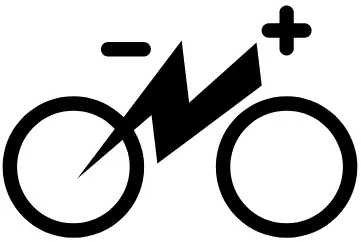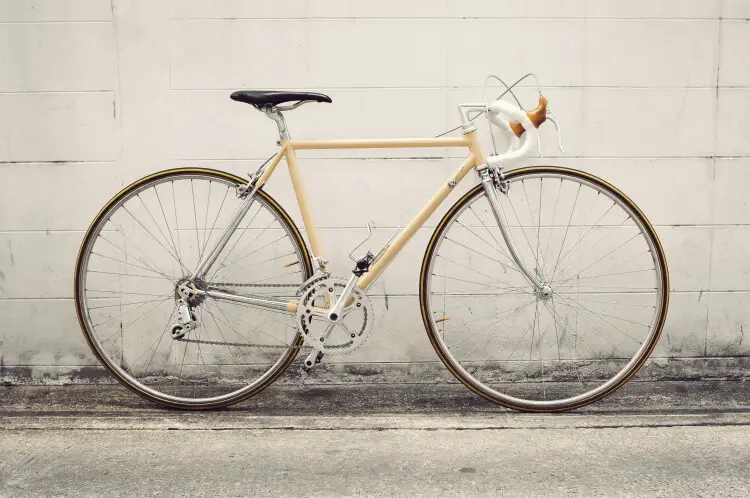One of the fascinating parts of cycling is the development of bikes over the decades. The style, technology, and materials give insights into the rich history of cycling. Whether it’s restoring one or just riding one, old bikes can be a great and interesting way to link to the past. If you want to delve into your bike’s back story, finding the year your bike was made is a great starting point.
For people selling or buying bikes, it’s vital information that can help you value the bike accurately. If you’re a bike collector or just intrigued about the bike you have in the back of your garage, the date it was made is the first piece of the puzzle.
There isn’t one exact method for working out the date. Like many areas of cycling, different ideas are taken on by different brands in different eras. This can add to the intrigue though, as you can take on a little investigation work to help fill in the blanks.
To get you started, we put together the best tips for finding out when your bike was manufactured. So whether it’s a highly collectible vintage racing bike or one from a garage sale, you have a great chance to unravel some of the history behind your ride.
1. Check the Serial Number

The obvious starting point to find the date a bike was made is the serial number. Serial numbers are stamped onto the bike during the manufacturing process. They are a useful tool in helping recover bikes after theft and also to establish the model.
The good news is most bikes have them. The bad news is there is no standardization method, which can leave you wondering what your number actually means. The number (and sometimes letters) can include digits that represent the month, year or model code – as sequential production number or variants of any of these.
If you’re lucky, the serial number can give you the year included in the number in an obvious format. Schwinn, for example, has quite a simple system with only a few variants that include the date of manufacture. There is also an easy ‘look up’ tool for Schwinn at Bike History.
Trek is more typical of what you can expect to find. They have changed their system a few different times, so it can be a little more complicated. Mostly you can find the date after some research. Thankfully, there are resources online such as Vintage Trek to help you crack the code.
There are however many brands who have no real guidelines or records of what the code represents. This Claud Butler serial number (image) from an old mountain bike gives so little away that it’s probably easier to identify the year in a different way.
Most serial numbers are found under the bottom bracket, although some can be found on the headset or one of the frame tubes. If you don’t see it straight away, there is a chance it has been painted over at some stage. You can still easily get to it as this video shows:
2. Use Online and Offline Literature
At some time, every old bike was the latest model, and with that usually comes marketing, catalogs, and bike manuals. There are still a lot of these resources online and in print to help identify vintage bikes.
If your bike still has the model or brand name on the frame, it’s going to make finding the literature easier. However, these are sometimes painted over, but all is not lost if the name has been removed along the way. My Ten Speed has a page that helps distinguish different bikes over the decades. While American Vintage Bicycles has enough information and images to be a great starting point.
The best resource which is well renowned and full of old literature is the Veteran Cycle Club. This is a UK organization that runs in collaboration with the National Cycle Archive. There is a huge database that has a museum archive feel, but there is also a membership fee of $60. So if you’re just looking up one bike it might not be worth it. There is even a list of every bike brand to help you with your search.
While the Online Bicycle Museum isn’t as thorough as the Veteran Cycle Club, there is still a lot of images and marketing information and they also have a serial number guide.
Once you know the brand names, there are other resources that open up. 2 Velo has a range of historic catalogs and Bicycle Blue Book has a feature that can be a really useful tool. The value guide lets you search old models of different years and see images and in some cases full manufacture specifications. This is a huge help and can work like a database.
This allows you to narrow down the model and year of your bike. As you would expect from a value guide, it also gives you a comprehensive understanding of the value of your bike across various conditions.
3. Look at Specific Parts

Although the frame will be the most recognizable element of the bike, the parts can help date the bike too. There is one obvious consideration; parts can be swapped and upgraded so what’s on your bike might not be from the original. So, there is some critical thinking needed here.
If the parts are clearly much newer than the frame, they aren’t going to help. At the same time, don’t rely solely on one part if you date it, as it could still have been swapped at an earlier stage. You can use the parts as clues rather than relying on them to give a definitive answer.
So what parts are identifiable? There is a lot of grey area with cycling parts. When they were introduced, how quickly they became universally used is impossible to tell. What we can do is look for some developments that were widely taken on board to give us the best chance of nailing a time frame.
Shifters are a good place to start. The old friction shifters were replaced by Indexed Shifting in 1984 by Shimano. Not every bike was automatically updated, but anyone who has used a friction shifter will appreciate not many bike brands would continue to specify them if there was another option.
While some parts take a lot of research to identify, others are more simple. Looking at mountain bikes, for example, suspension forks started to be widely used from 1990 onwards. While there are still rigid forks available, it would be a good clue of when your bike was manufactured.
By looking carefully at the individual parts, you can use them to help identify particular dates that put you in the right direction.
4. Ask the Seller or Owner
It may seem obvious, but if you bought your bike second hand it’s worth getting in contact with the owner. It may be unlikely they have kept the receipt and if it’s very old they may not even remember when they bought it. However, a brief chat could help you narrow the time frame down.
While memories fade, there are some dates that can’t be disputed. Did they have it at college, when their child was born, did they take it on a cross-country road trip, or when someone graduated high school? They might be able to unlock the secret that the bike hasn’t managed to.
5. Bring It to a Bike Shop
In addition to their professional knowledge, people working in bike shops often have an interest in bikes that goes beyond a day job. Calling in and asking for advice from someone in the industry could get you the benefit of some professional knowledge and a quick positive result.
If they don’t know themselves, you’re likely to get access to other people’s experiences. People working in the industry are usually linked to a network of equally enthusiastic people.
Actually seeing the bike in person can help people too, as elements can be missed in photographs. It’s also good to connect with your local bike scene so calling in would also give you a chance to do that.
6. Post Online
The place where you can find even more expert knowledge than your local bike shop is online. The cycling community has a huge range of sites and forums, but it’s important that you pick the right ones.
Make sure you type out all of the information you have to put in your post. For example, when did you buy the bike, what results you have checked, the serial number, and any identifiable parts. A selection of images is helpful too. You should include close-up images of any useful parts.
Remember, it’s not just the obvious things you can see that will help. For example, has a badge been removed from the front? If so, perhaps there is an indentation in the old paintwork or the shape of the old badge? Are there any new parts that don’t sit quite right? Perhaps the old fitting is an unusual and traceable one. The more information you can provide, the better.
It’s worth making sure you choose the appropriate forum, too. There are large sites like BikeForums.net and Bike Radar where you can select a subforum, allowing you to discuss with the right people. There are also specific vintage sites that have forums with CABE (Classic & Antique Bike Exchange) and RetroBike being particularly useful.
Final Word
Working out the age of a bike can be confusing and frustrating. But at the same time, it can be fun. It can put you in contact with new people and you find clues in the unlikeliest of places.
If you follow the tips above, it should give you a better understanding of your bike. It will tell you how it was put together and an appreciation of the different parts and eras. Before you embark on the journey, remember to quickly check the serial number. If you’re lucky, the answer may already be stamped on the bottom.

